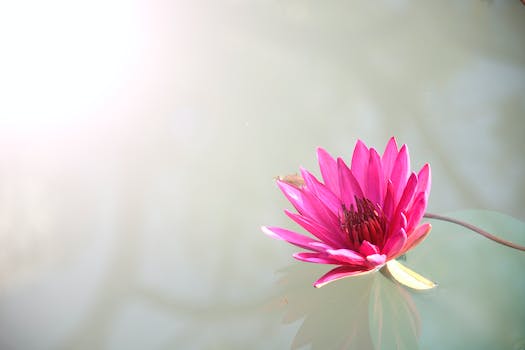-
Table of Contents
- How to Draw a Lotus: A Step-by-Step Guide
- Materials Needed
- Step 1: Sketch the Basic Shape
- Step 2: Add Detail to the Petals
- Step 3: Draw the Center of the Flower
- Step 4: Add Leaves and Stems
- Step 5: Add Color (Optional)
- Tips for Drawing a Realistic Lotus
- Conclusion
- Q&A
- Q: How can I improve my shading technique when drawing a lotus?
- Q: Are there any online tutorials or resources that can help me learn how to draw a lotus?
- Q: Can I use a different medium, such as watercolors, to draw a lotus?
- Q: How long does it typically take to draw a detailed lotus flower?
- Q: What are some common mistakes to avoid when drawing a lotus?

Lotus flowers are not only beautiful but also hold significant cultural and spiritual symbolism in many societies. Drawing a lotus can be a rewarding experience, whether you are an experienced artist or just starting out. In this comprehensive guide, we will walk you through the process of drawing a lotus step by step, providing tips and techniques to help you create a stunning representation of this iconic flower.
Materials Needed
- Pencil
- Eraser
- Drawing paper
- Colored pencils or markers (optional)
Step 1: Sketch the Basic Shape
Start by lightly sketching a circle in the center of your paper. This will serve as the base for the lotus flower. Next, draw a curved line extending from the top of the circle, creating the first petal. Repeat this process around the circle, adding more petals until you have a complete flower shape.
Step 2: Add Detail to the Petals
Once you have the basic shape of the lotus flower, add detail to the petals by drawing curved lines to create a more realistic and textured look. You can also experiment with shading to add depth and dimension to your drawing.
Step 3: Draw the Center of the Flower
Next, draw a small circle in the center of the flower to represent the seed pod. Add lines radiating out from the center to create a more intricate design. This will give your lotus flower a more realistic appearance.
Step 4: Add Leaves and Stems
To complete your lotus drawing, add leaves and stems around the flower. Draw long, curved lines extending from the base of the flower to represent the stems. Then, add oval-shaped leaves around the stems to give your drawing a more natural look.
Step 5: Add Color (Optional)
If you want to add color to your lotus drawing, use colored pencils or markers to fill in the petals, leaves, and stem. Experiment with different shades and blending techniques to create a vibrant and realistic representation of the flower.
Tips for Drawing a Realistic Lotus
- Study reference images of lotus flowers to understand their shape and structure.
- Practice drawing individual petals and leaves to improve your technique.
- Experiment with different drawing styles and techniques to find what works best for you.
- Don’t be afraid to make mistakes – drawing is a learning process, and practice makes perfect.
Conclusion
Drawing a lotus flower can be a challenging but rewarding experience. By following the steps outlined in this guide and practicing regularly, you can create a beautiful and realistic representation of this iconic flower. Remember to be patient with yourself and enjoy the process of creating art. Happy drawing!
Q&A
Q: How can I improve my shading technique when drawing a lotus?
A: Practice shading with different pencils and experiment with blending techniques to create depth and dimension in your drawing.
Q: Are there any online tutorials or resources that can help me learn how to draw a lotus?
A: Yes, there are many online tutorials and videos available that can provide step-by-step instructions and tips for drawing lotus flowers.
Q: Can I use a different medium, such as watercolors, to draw a lotus?
A: Yes, you can experiment with different mediums to create unique and colorful representations of lotus flowers.
Q: How long does it typically take to draw a detailed lotus flower?
A: The time it takes to draw a lotus flower will vary depending on your skill level and the level of detail you want to achieve. On average, it may take a few hours to complete a detailed drawing.
Q: What are some common mistakes to avoid when drawing a lotus?
A: Some common mistakes to avoid include rushing the drawing process, neglecting to study reference images, and not paying attention to detail in the petals and leaves.






